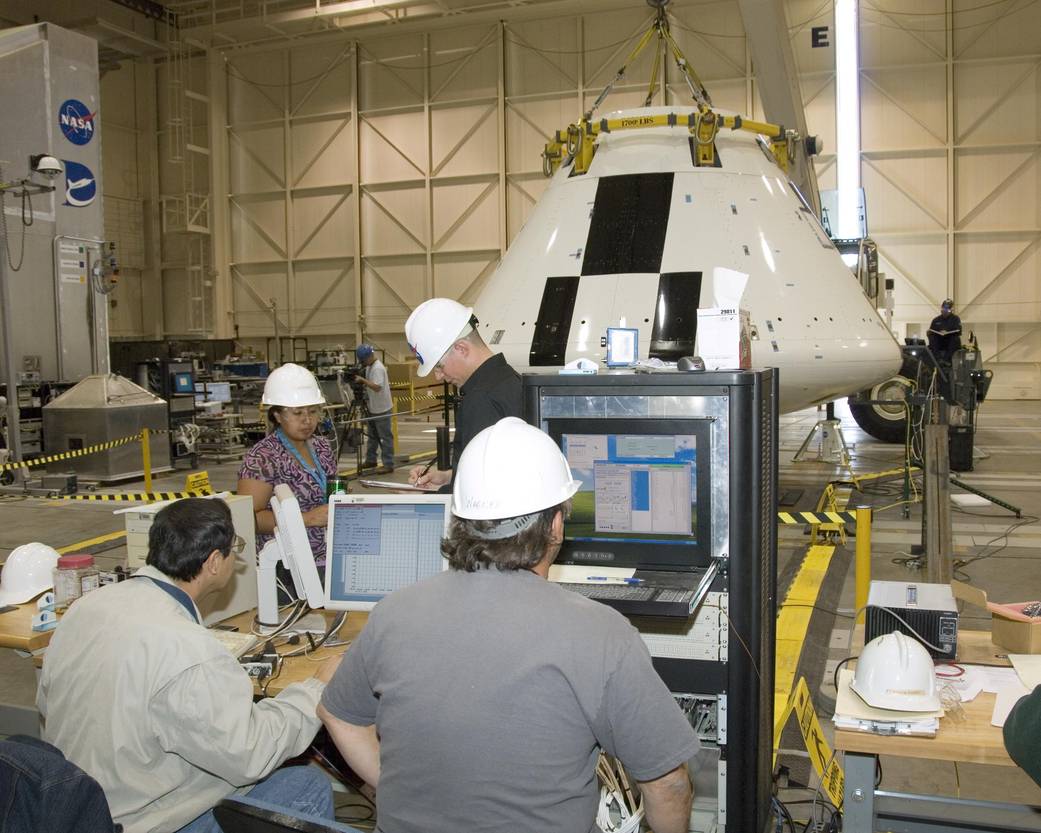ED08-0230-357
Under the watchful eyes of technicians, a crane positioned the Orion PA-1 Abort Flight Test module for mass properties testing in NASA Dryden’s Flight Loads Lab.
NASA Dryden Flight Research Center had a critical role in the early development of the Constellation systems. Applying Dryden’s expertise with testing unique flight configurations, Dryden helped manage and implement the abort flight tests for the Orion Crew Exploration Vehicle. Dryden led the development and integration of the full-size Orion test articles along with development of the ground support equipment, flight instrumentation, and launch facility construction for the early pad abort and all ascent abort flight tests.
The Orion Abort Flight Test effort was to have included two pad abort tests, simulating aborts during a launch pad emergency, and four ascent aborts, simulating aborts during first stage flight of Orion spacecraft. Dryden managed procurement and oversaw development of the solid fuel abort test booster rockets used for ascent abort testing, and integrated the Orion test articles with their booster rockets.
NASA Dryden also supported Constellation program technical integration activities.
Future Dryden support roles were to include assisting with the development of lunar lander test and verification support and flight simulation support of the Constellation training facility. Other potential support included west coast recovery operations, and operation of a lunar / Mars surface analog test site.
The Orion Abort Flight Test project was managed by NASA Dryden under the leadership of the Project Orion Flight Test Office at NASA’s Johnson Space Center, Houston, TX.
Part of NASA’s fleet of next generation spacecraft, Orion was designed to take astronauts to the International Space Station and then back to the moon by 2020.
November 5, 2008
NASA / Photo Tony Landis




























